Organization Gets Community Members to Play Key Role in Getting People Vaccinated
Over 1 million people have died from COVID-19 in the United States (U.S) with higher rates among racial and ethnic minority groups. There are over 60 million Hispanic people in the U.S. accounting for nearly 20% of the country’s population. Over the course of the pandemic, the Hispanic population experienced 1-and-a-half times more cases of COVID-19, over 2 times more hospitalizations, and nearly 2 times more deaths in comparison with White, non-Hispanic groups. See more here.
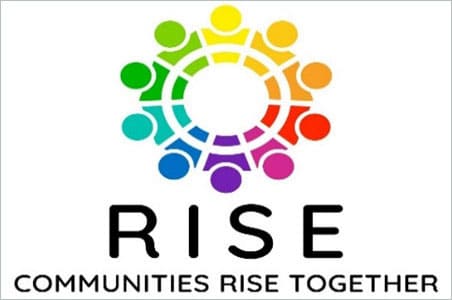
Communities RISE (Reach, Immunizations, System Change for Equity) Together is an alliance of partners connected to over 2,400 organizations across the nation working to address barriers to COVID-19 vaccination. RISE connects health departments with community messengers and builds communications campaigns to address misinformation and disinformation regarding vaccines. Somava Saha is Executive Co-Lead with RISE, and she says you have to trust the people who are involved in their respective communities. “The people closest to the ground know what is going on, and you trust them to tell you what people are feeling. When you allow those you trust to lead the strategy you get to different results.” Saha adds, “RISE was created in the context of the pandemic to assure that our communities of color and communities experiencing inequalities don’t get harmed but are able to lead the response in their neighborhoods. We brought together 10 national partners to work with Black, Indigenous, Hispanic, and other communities to create that response.”
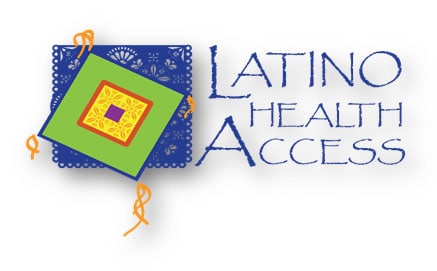
Latino Health Access (LHA) is one of those partners. LHA continues to work with the medical community in south metro Los Angeles, CA to bring COVID-19 testing, education, and COVID-19 vaccine to some of the hardest hit communities in Santa Ana, Anaheim, and San Juan Capistrano. LHA is a non-profit organization serving the Orange County community for nearly 30 years through services ranging from diabetes self-management classes, emotional wellness assistance, and advocating for policy change to improve people’s lives.
Challenges and Concerns
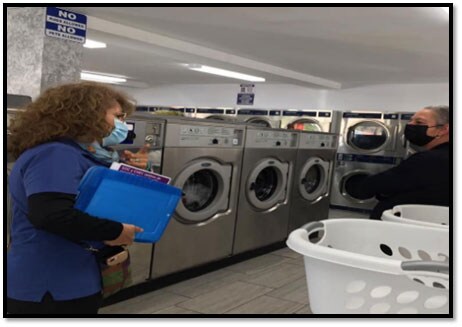
The vaccination gap within Hispanic communities is compounded by a variety of challenges (or barriers) including language barriers, no internet access, difficulty getting access to vaccines, transportation issues, and mistrust in the health care system. LHA Chronic Illness Program Coordinator Guillermo Alvarez emphasizes, “once you break that trust, it’s very hard to get back.” He adds that Hispanics in his community needed a way to talk about their concerns or fears, and community leaders and trusted public figures could help with that. This is where promotores come into play. Promotores are Hispanic community members who receive specialized training to provide basic health education in the community. Promotores are stationed throughout communities in common places like churches, grocery stores, and schools. Promotores are able to expand their reach by engaging community members outside of typical health systems, and by addressing concerns about getting the COVID-19 vaccine.
- I do not want the virus injected in me
- I have heard people have died after receiving the vaccine – what will happen to me?
- Will I get COVID after getting vaccinated? Will I get sick?
- I have a medical condition – is it safe for me to get the vaccine?
- I have read or heard information that makes me fearful of the vaccine.
Eliminating Obstacles
There were a lot of hurdles to overcome in getting the Hispanic community vaccinated – especially the way vaccines were distributed. Alvarez says, “the big vaccine clinics that were put up by our county were far away from the most vulnerable communities that needed access. They were also in languages our communities couldn’t understand. A lot of it was in technological terms and a lot of our community doesn’t even have email so being able to register for a vaccine was a barrier.” Alvarez went on to say, “in the Latino community a lot of the parents depend on their kids to make doctor’s appointments, and this was highlighted during COVID vaccine distribution. If the parents didn’t get help, what were they to do at that point?”
There were also concerns that Orange County did not properly include underserved communities in its vaccination distribution plans which focused on COVID-19 vaccine POD (Point of Dispensing) sites at Disneyland and the Anaheim Convention Center. Maria Cervantes is the Director of Partnerships and Strategic Communications with LHA. She points out “most of the POD sites were drive through and many in our community don’t have cars, so they couldn’t just walk up to a POD and get taken care of.” The original idea behind the POD sites was to increase the number of vaccines that were distributed. Cervantes wonders whether proper consideration was given to the difficulty low-income and underserved community members would experience in trying to get to the POD sites.
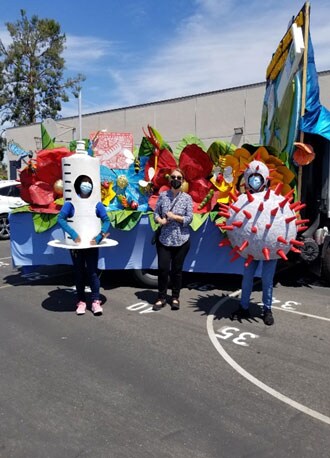
LHA found ways to address these hurdles. They partnered with local clinics to bring COVID-19 vaccines to communities. Alvarez says, “We did it at parks, we did it at apartment complexes, we did vaccination clinics in parking lots, and at churches. We would take a week or two to advertise the event and then collaborate with different partners such as grocery stores and school districts just to get word of mouth.” They also had clinics on weekends and holidays. Alvarez said they started the clinics later in the day, and kept them open into the early evening, so more people could come. They utilized holidays, such as MLK day and President’s Day, because that was when community members were off and could get vaccinated. Cervantes was especially pleased with one particular effort to get people vaccinated. “We created a vaccination float that we took to these very needy communities. We let people know we were coming with a megaphone and played music. We brought information in their respective language and an environment of happiness. We brought the clinics to them- it helped make people more comfortable.”
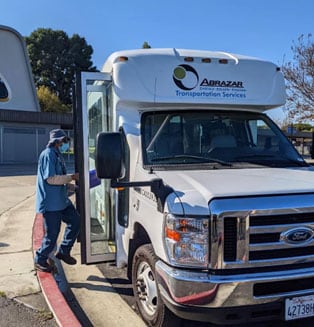
LHA also worked to provide a van to shuttle older adults to and from clinics. Only 2-3 people were taken at a time so they could socially distance. There were also times when someone driving to work would drop off a family member to receive a vaccine. LHA would pay a ride sharing service to take that person home. Alvarez says many in these communities live paycheck to paycheck so missing any work to get vaccinated was definitely a reason people didn’t get vaccinated. “In Santa Ana County, where we are based, it’s very common to have 2, 3, or 4 families living together to share the rent because it is so high. Many of these people prioritize work over getting a vaccine because they can’t afford to miss a paycheck for fear of getting evicted.”
A lot of LHA services are created from a need in a community. Alvarez says listening to the promotores is important. “When our promotores say there is a service that is needed in the community, that’s when LHA does its best to find a way to solve that need or gets grants to help solve it. We did so much for community members other than just setting up appointments. We set up a call center, we set up a contact tracing center. Because our community members had technological issues, we had our promotores go to them and let them know if they tested positive and then they made sure they had everything they needed to isolate properly.”
LHA’s Accomplishments
So, what does Alvarez think is his organization’s biggest success during the pandemic? “It is training our promotores to use technology. That was a barrier at first for our participants and internally as well. Some of our promotores didn’t have a lot of formal education. Some didn’t know how to read or write; some didn’t know how to use computers so being trained to use Google voice and Zoom was important. We have a data base system where promotores enter all of their own data so that is a success story.”
He adds, “Hopefully COVID comes and goes but the tools we are giving them will stay with them for any other project they are given in the future – whether it be diabetes, emotional wellness, or civic engagement these are tools they are going to be able to take.”
Alvarez says there were lessons learned as well. “Hopefully this (a pandemic) doesn’t happen again, but if it does, we understand a lot more about how to get the word out. Also, involve the community before developing any plan or solution. They will be able to provide 95-98% of the answers you need and when you involve them you build trust.”
Cervantes adds, “The biggest lesson learned to me is staying true to the mission and bringing health equity to the impacted communities.”
This content was also posted on Partnering for Vaccine Equity: Stories from the Field.
What are you, your health department, or your organization doing to support COVID-19 vaccination in your community? Share your story with communityfeatures@cdc.gov and you could see it on our COVID-19 Vaccine Community Features page.